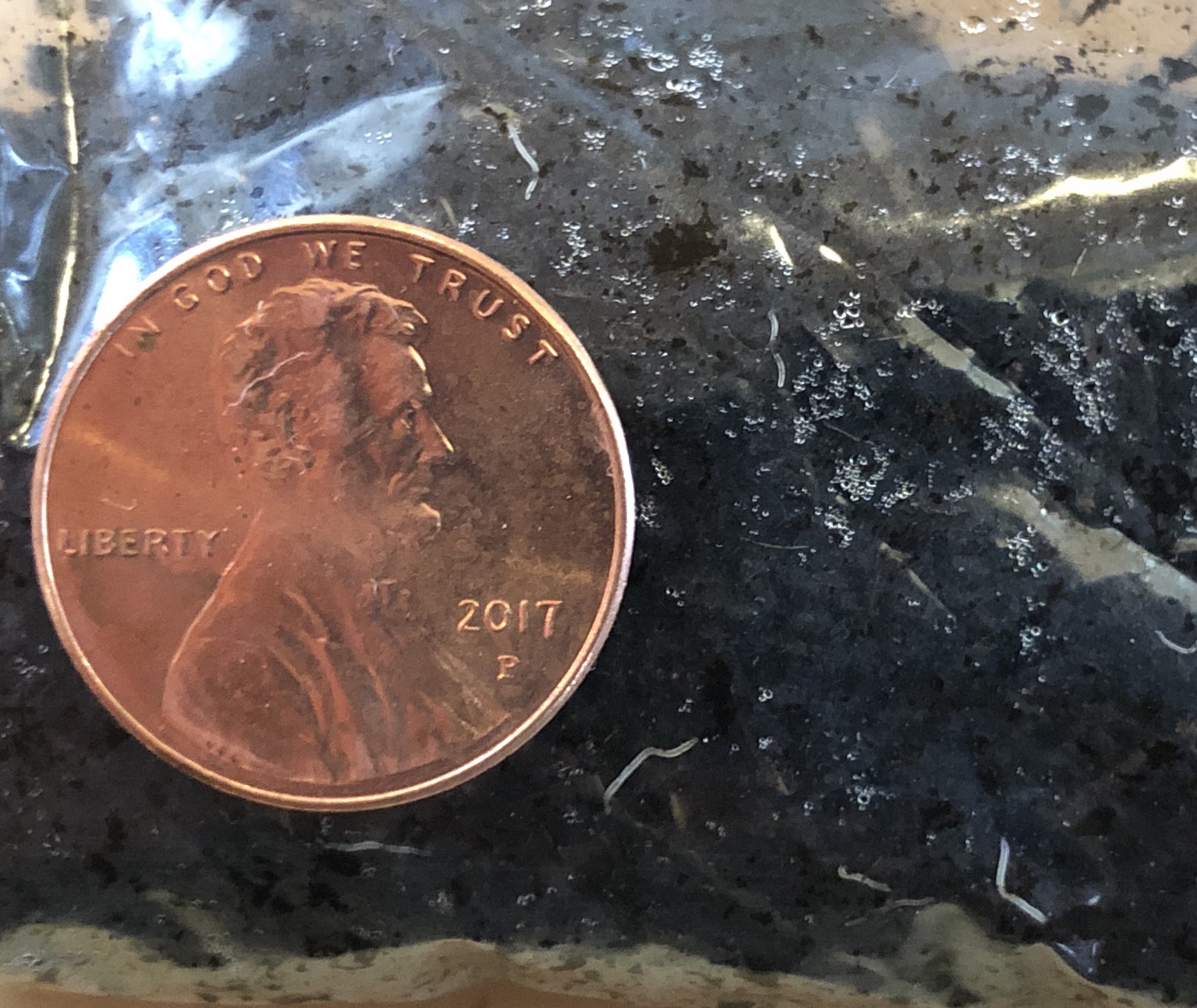In your baggies? That’s odd.
I generally think of fungus gnat larvae (of which I’ve had more than my share) as being slightly more translucent and a bit less, I’ma say, lanceolate(?) on the end. I might lean towards nematodes, but I’m not overly familiar with such. Regardless, I don’t know that it would be fair to call them out as the culprits.
I see such on my failed cuttings way too often, but have never seen such on seeds. (Most of my cuttings fail, alas…) My assumption has been that they are detritivores feeding on decaying matter.
I have recently been sterilizing seeds with a dilute peracetic acid* wash which seems to cut down on the amount of fungus without creating a noticeable effect on germinations, BUT I would want to do a controlled study before making that assertion too boldly. I also sterilize my media – a step, the merits of which I sometimes question. (I steam sterilize moist media in the microwave, but my medium is predominantly peat. I use the peat as it ostensibly has enzymes that inhibit fungal growth, but wonder if the heat of sterilization wouldn’t destroy those enzymes. I wonder if there are studies on such out there… Anybody know?? I’m not sure if my wife has determined the cause of the periodic, strange, musky smell around the microwave, but I digress…)
At any rate, stratifying in small zip lock bags**, I might get some fungi (which are seemingly relatively inconsequential to healthy seeds) but I’ve never seen any fauna of the genre you have… I would guess yours were in your medium.
And while I’m inclined to think the seeds might have become worm fodder because they failed, and not vice versa, I will note that some hungry detritivores are known to resort to attacking things that are perhaps not so dead when their preferred food source is scarce…
( * You can look up peracetic acid (CH3COOH) which is a sanitizer made from combining hydrogen peroxide and acetic acid (vinegar): H2O2 + CH3COOH <–> CH3OOOH + H2O. I mix about 2-3 parts hydrogen peroxide (3%) with one part vinegar (5% – I use cider) – a solution which leans towards the peroxide. I probably dilute this solution with a good five to ten parts water to one part solution – I’m not very scientific about it. I’m not saying the use of such has merit – I have never done a real test to determine/compare any benefits /detriments in doing this – I’m just saying it’s my current procedure.)
( ** The bags I use are left-over pill-crusher bags, and hence pretty heavy duty little guys, but ULine makes PP bags that should certainly seal well enough to prevent bugs from getting in.)
Finally, Don’t do what I do. I am not proposing any of the above as good ideas. 
